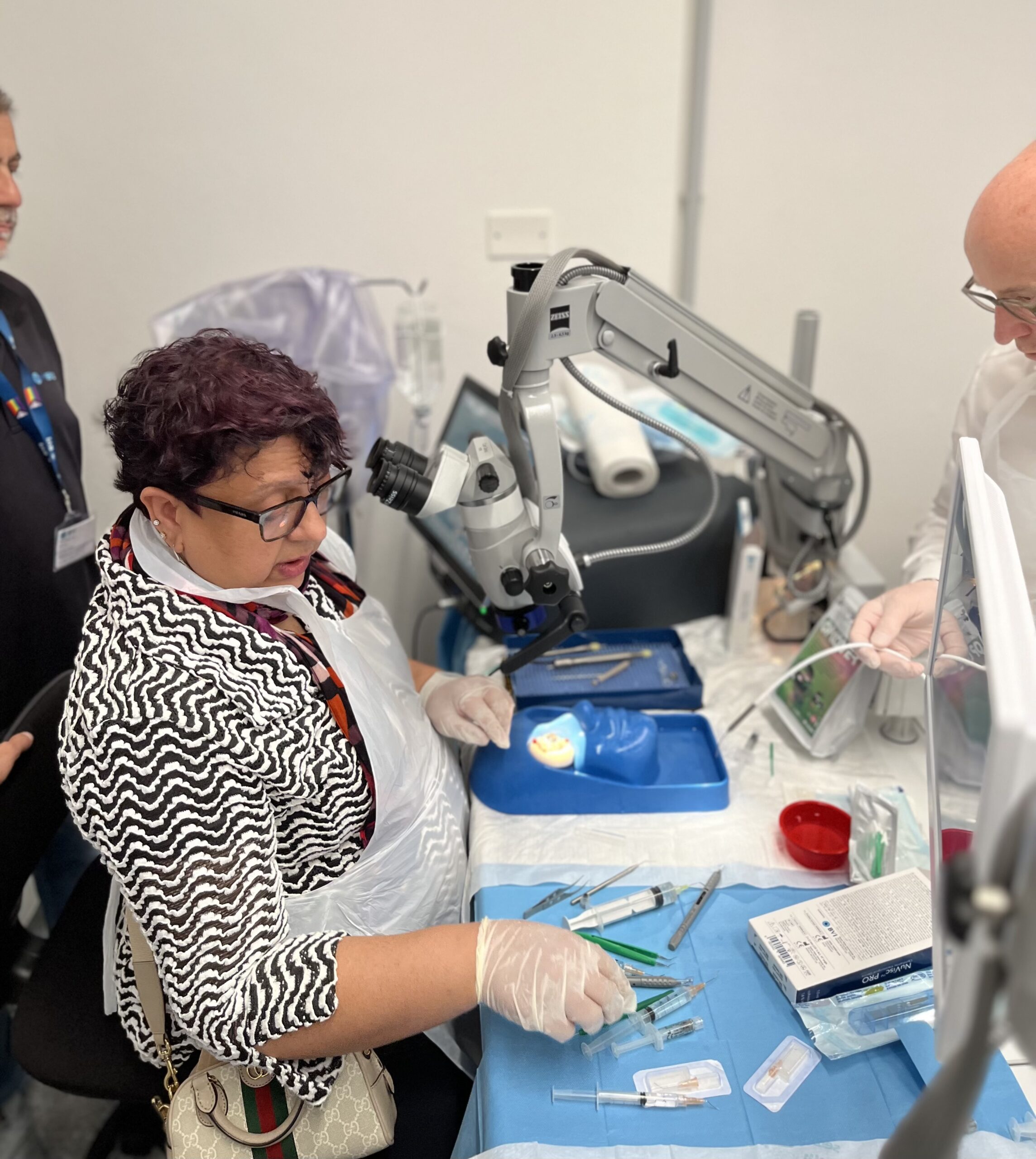To Book your Consultation Call or Whatsapp : +91 82470 84087
To Book your Consultation Call or Whatsapp : +91 82470 84087

Over the past decade, glaucoma surgery has evolved from complex, high-risk procedures to minimally invasive techniques that achieve effective eye pressure control while ensuring patient comfort and rapid recovery.
Dr. Vanita Pathak Ray has been among the pioneers in India to adopt and master these advanced methods — combining innovation with decades of clinical experience to provide the best possible outcomes for her patients.
MIGS refers to a group of surgical procedures that use tiny incisions and micro-devices to lower intraocular pressure with minimal trauma to the eye’s tissues.
Unlike traditional glaucoma surgeries, MIGS procedures are quicker, safer, and can be performed under topical anesthesia.
MIGS is not a one-size-fits-all solution — Dr. Pathak-Ray tailors the choice of technique based on each patient’s type and stage of glaucoma.
1. iStent Inject®W
A microscopic titanium implant (smaller than a grain of rice), which is a stent placed inside the eye’s drainage channel to improve fluid outflow and lower pressure. It can be easily combined with cataract surgery without the need for any additional incisions. (Outflow procedure).
2. Kahook Dual Blade (KDB) Goniectomy
A precision surgical blade that removes a small portion of the trabecular meshwork, enhancing fluid drainage naturally without external implants (Outflow procedure). This too can be easily combined with cataract surgery – without the need for any additional incisions.
3. Endoscopic Cyclophotocoagulation (ECP): a laser delivered via a state-of-the-art camera to reduce the fluid inside the eye (Inflow procedure). It can also be easily combined with cataract surgery without the need for any additional incisions.
4. Combined Cataract Surgery + MIGS
Performed when both cataract and glaucoma exist together, allowing patients to achieve better vision and pressure control through a single-stage single incision procedure – optimising outcomes.

5. Combined MIGS surgery +/- Cataract surgery
Sometimes in advanced glaucoma, two MIGS procedures are combined (Inflow+Ouflow) to achieve lower IOP, which is usually not possible with one MIGS procedure. This too is single stage, single-incision procedure along with cataract surgery, but it can also be done when a patient has already had a cataract surgery performed elsewhere.
All MIGS procedures only add about 5 minutes to the cataract procedure (usually about 10 minutes). Traditional surgeries like trab or tube add 30-60 minutes to the cataract procedure.
MIGS procedures are typically performed as day-care surgeries, allowing patients to return home the same day.
Most experience minimal discomfort and can resume normal activities within 24–48 hours.
Follow-up care is crucial. Regular monitoring ensures that eye pressure remains stable and vision stays protected for years to come.
Dr. Pathak-Ray’s team provides clear post-surgery guidance, medication support, and follow-up scheduling for every patient.
Understanding surgical choices empowers patients to make informed decisions.
Visit the Insights & Blog section for articles where Dr. Pathak-Ray explains MIGS techniques, their evolution, and what patients can expect before and after surgery.
Every eye is unique. During consultation, Dr. Pathak-Ray will assess your glaucoma type, stage, and overall eye health to recommend the safest and most effective treatment.